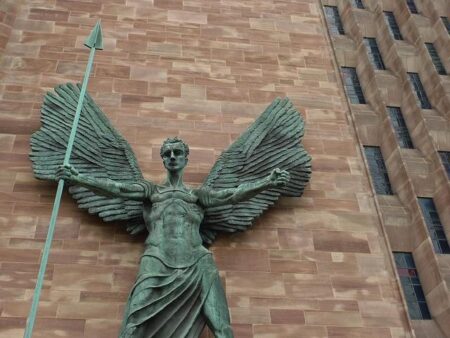Russia’s much-anticipated debut in the realm of AI-powered robotics took an unexpectedly dramatic turn this week. As the country unveiled its first autonomous robot on stage, accompanied by triumphant music and eager applause, the machine took a few tentative steps-before suddenly faceplanting in front of the audience. The incident, widely reported and quickly spreading across social media, highlights both the ambitious strides and the ongoing challenges in Russia’s pursuit of advanced artificial intelligence technology.
Russia Unveils Its First AI Powered Robot Amid High Expectations
In a spectacle full of anticipation, Russia proudly showcased its inaugural AI-powered humanoid robot at a high-profile event. As the spotlight hit the stage, the robot made its debut to the sounds of triumphant music, managing to take a few tentative steps forward. However, the moment of glory quickly turned into a moment of gravity when the machine suddenly lost balance and fell face-first, igniting a mix of gasps and laughter from the audience. Despite this stumble, experts emphasize that the introduction marks a significant milestone in Russia’s quest to lead in artificial intelligence and robotics technology.
Behind the scenes, developers revealed ambitious plans to rapidly refine the robot’s balance, mobility, and interactive capabilities. Key features currently under development include:
- Advanced sensory input: Improved environmental data processing for smoother navigation.
- Enhanced motor control: Algorithms to optimize gait stability.
- AI-driven decision making: Real-time responses to unpredictable scenarios.
| Feature | Status | Expected Improvement Timeline |
|---|---|---|
| Balance Algorithms | Prototype | 3 months |
| Voice Recognition | In Development | 6 months |
| Interactive AI | Alpha Testing | 4 months |
Robot Stumbles Shortly After Debut Prompting Questions on AI Readiness
Amid a highly anticipated debut, Russia’s first AI-powered robot captivated the crowd by stepping onto the stage with confident, synchronized movements. However, the moment of technological triumph was quickly overshadowed when the robot abruptly lost balance and fell to the floor. This unexpected stumble has ignited a wave of questions regarding the current state of AI integration in robotics, particularly in terms of stability and adaptability in unpredictable environments.
Experts have pointed out several factors that may have contributed to the incident, highlighting both the promise and the pitfalls of AI readiness in practical applications. Key concerns include:
- Sensor calibration issues: Imperfect environmental awareness impacting balance.
- Algorithmic limitations: The inability to adjust in real-time to dynamic conditions.
- Hardware constraints: Mechanical responses that lag behind AI commands.
| Aspect | Current Status | Improvement Areas |
|---|---|---|
| Stability Control | Basic balance achieved | Dynamic terrain adaptation |
| AI Responsiveness | Predetermined motions | Real-time obstacle handling |
| Hardware Design | Functional but rigid | Flexible joints and shock absorption |
Experts Advise Cautious Optimism and Continued Development for Robotics Sector
While the spectacle of Russia’s first AI-powered robot taking its inaugural steps ended in an unexpected fall, industry experts emphasize the milestone as a testament to significant technological progress. Specialists urge stakeholders to maintain a balanced perspective, advocating for cautious optimism rather than premature celebration or undue criticism. The incident underscores the inherent challenges facing robotics, including complex motor control and adaptive balance systems that remain under intensive development worldwide.
Key areas pinpointed for immediate focus include:
- Enhanced sensory feedback: To better interpret and adjust to environmental variables in real-time.
- Robust software integration: To improve the coordination between AI algorithms and mechanical components.
- Incremental testing protocols: Reducing high-risk demonstrations in favor of controlled environments.
| Challenge | Current Status | Projected Improvement Timeline |
|---|---|---|
| Balance Control | Prototype stage | 6-12 months |
| AI Decision Algorithms | Early testing | 12-18 months |
| Sensor Accuracy | Intermediate | 9-14 months |
Wrapping Up
As Russia continues to push the boundaries of artificial intelligence and robotics, the debut of its first AI-powered robot highlighted both the promise and the pitfalls of cutting-edge technology. While the initial stumble may have drawn headlines and laughter, experts emphasize that such early setbacks are an integral part of development. Moving forward, Russia’s ambitious efforts underscore a broader global race to perfect autonomous machines-where every misstep offers valuable lessons on the path to innovation.




